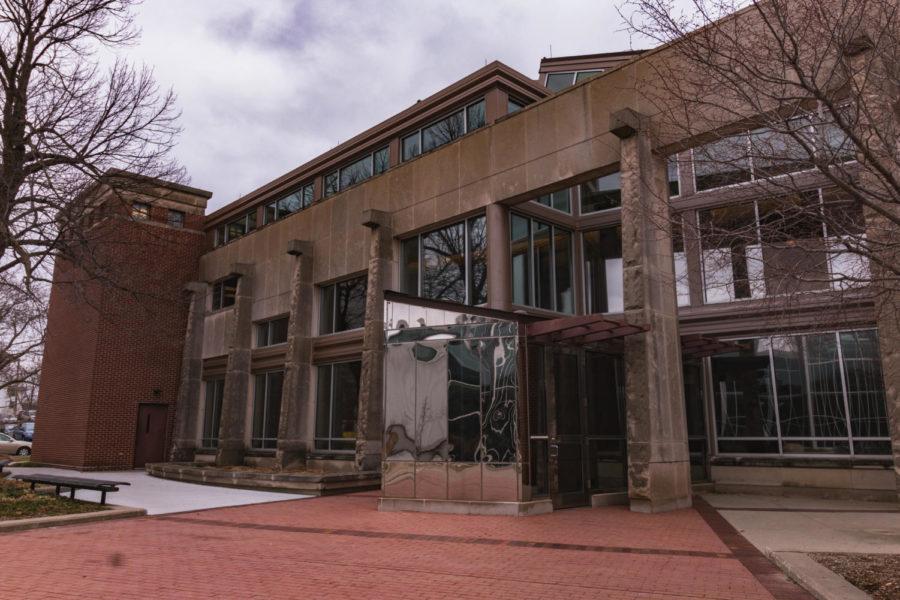Thielen Student Health Center researches potential expansion
Photographer: Alec J Giljohann
The Thielen Student Health Center is one of many resources on campus available to students.
March 1, 2018
With a student population increasing faster than the number of resources available, the Thielen Student Health Center is researching an expansion on its building and services.
The proposed expansion would include both the Student Wellness Center, currently located in Friley Hall, and Student Counseling Services, located in the Student Services Building. With the building already being next door to State Gym and Recreation Services, this expansion would further tie the four together as the Student Health and Wellness branch of the Division of Student Affairs.
“There was a building feasibility study done just for Thielen back in 2008, because at that point in time, with student enrollment that we have, we don’t have enough space for the number of providers we need,” said Erin Baldwin, director of the health center. “The study done essentially recommended doubling the size of the health center, but at that time there were a lot of competing priorities and it got put on the shelf.”
After the project had been shelved, Student Government put together a Mental Health Taskforce in fall 2016, which looked at the facilities and resources available to students regarding mental health and provided suggestions to leadership about how to proceed with increasing the number of resources. One of those suggestions was having the Student Health Center include both Student Wellness and Student Counseling Services.
The health center moved forward with the feasibility study in January 2017 and selected an architecture firm to help with the project in summer 2017, and are currently awaiting the final report.
The architecture firm also conducted stakeholder interviews with faculty and students, where the two groups ranked their priorities and gave feedback on services and location. The study showed multiple location possibilities around both State Gym and Lied Recreation Center, but Baldwin said it comes down to building north of the Student Health Center or south of State Gym.
“With a student body of 36,000 students, what do you need in terms of primary care? What do you need in terms of mental health services? What do you need for wellness?” Baldwin said. “It was really important to the committee that, essentially, we create a health and wellness neighborhood for our students.”
Baldwin also noted the student feedback was consistent in how students prioritize health and wellness services, with mental health and wellness being prominent topics, as well as centrally locating “storefront services” provided by each branch of Student Health and Wellness.
“You walk in the door of the building and it’s really easy to get in and get out,” Baldwin said. “If you want to come in and talk to wellness, that would be a storefront service we’d want to have on the first floor. People want to be able to come into the pharmacy and get out of the pharmacy, things like biofeedback, that’s part of student counseling, or career exploration. Those services are what we call storefront services.”
The final report on the expansion is expected to be finished within the next week. From there, the final report would be presented to the capital planning advisory committee, and then to Facilities Planning and Management if there is interest in moving forward.
The total project cost is estimated between $48 million and $60 million. However, senior vice president Martino Harmon has made health and wellness a priority, and would work with the health center to get some kind of fundraising off the ground.
“It’s likely that we would have a conversation with the Iowa State Foundation about fundraising — hopefully there’s somebody that would really be interested in this project and bringing these services forward to these students,” Baldwin said. “We have some small reserves within Thielen that could be put forward and then there would be some conversation about a potential fee increase.”
If the project moves forward, Baldwin said a fee increase would not be set in stone until fundraising goals had been set and a design had been chosen.
“We’re essentially eliminating all of those barriers or perceptions that people may have about accessing those different services because they’re all in one area,” Baldwin said. “There’s a lot of other efficiencies we can create…if you’re seeing somebody for primary care for a mental health concern, or you’re seeing psychiatry, and then you’re seeing a counselor at student counseling, they can literally walk next door.”







